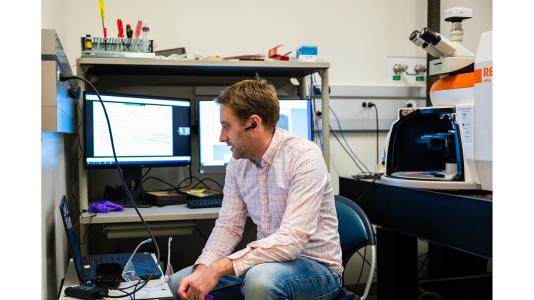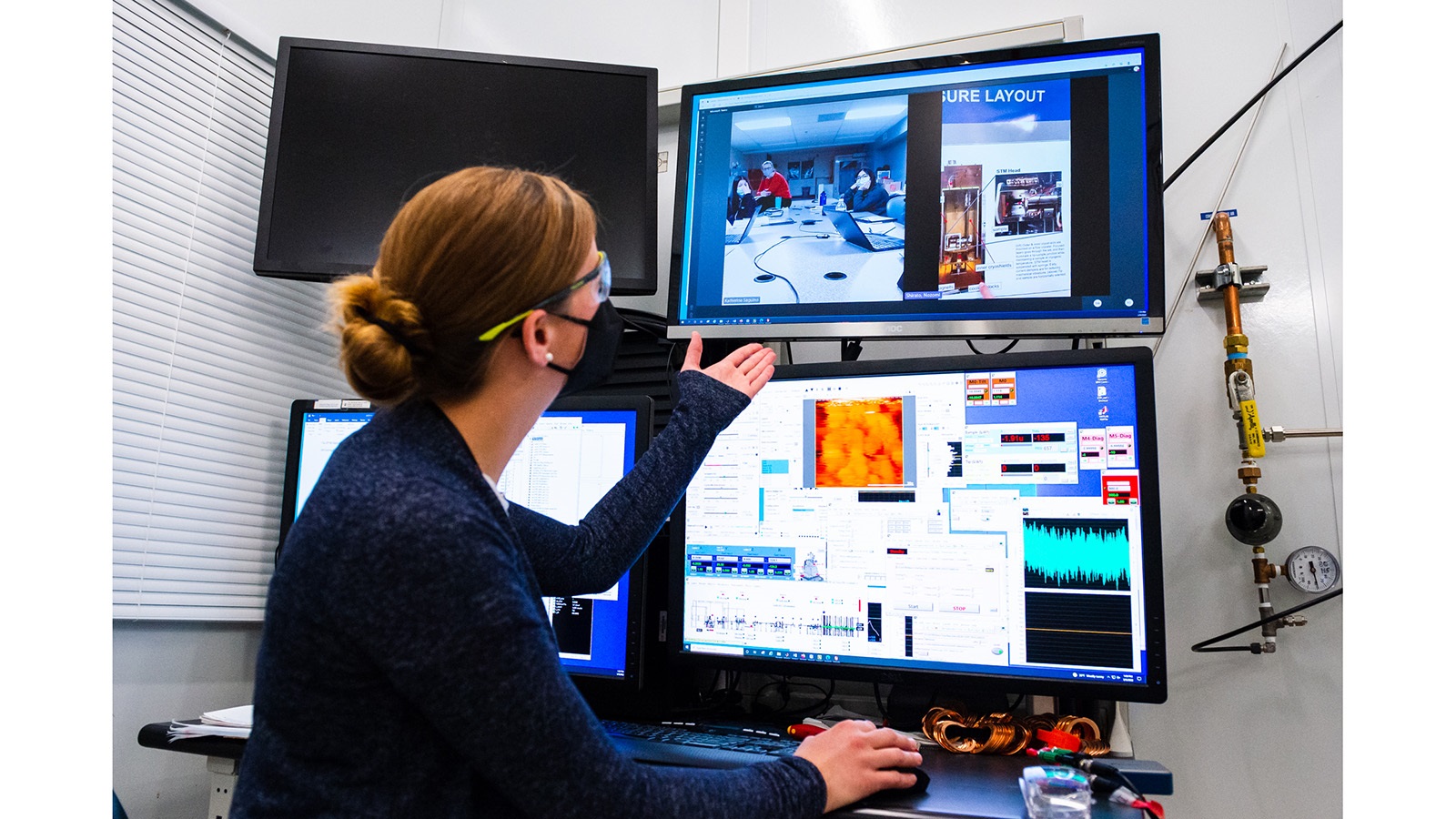High school students conduct cutting-edge research at Argonne user facilities

For high schoolers, getting the opportunity to perform state-of-the-art scientific research at a national laboratory is something they will never forget.
For over a decade, the U.S. Department of Energy’s (DOE) Argonne National Laboratory has engaged high school students with the laboratory’s world-class research through the Exemplary Student Research Program (ESRP). As ESRP has expanded, high schoolers now have the opportunity to conduct research with two DOE Office of Science user facilities at Argonne: the Advanced Photon Source (APS) and the Center for Nanoscale Materials (CNM).
“You don’t see many programs out there that bring Ph.D. researchers together with high school students to generate actual scientific findings. Even in college or graduate school, they might not get as great an opportunity as this.” — Chris Repa, Oak Lawn Community High School teacher
While the ESRP’s research activities began with APS and its intense X-ray beams, CNM, which uses microscopy to study nanomaterials, began to host ESRP projects in 2017. More recently, CNM’s presence in the ESRP has grown, as more ESRP students are doing research projects with CNM.
“Seeing how CNM works was truly informative,” said Bianca Ravesloot, a senior at Oak Lawn Community High School. “I’ve never been able to do something so high-caliber before, and see just how far we can go into analyzing just a simple leaf or stem. It provides such a deeper layer that many people don’t consider — even myself, before this experience.”
Oak Lawn’s students received help from their Argonne mentor, Ben Diroll, an assistant scientist at the CNM. The students led the research themselves, having developed the entire research subject (studying chemical effects on plants) on their own; however, Diroll helped them use CNM tools to investigate their topic. He even took the extra time to familiarize himself with their focus to understand their research needs.
“He evolved to match our project, rather than the other way around,” said Chris Repa, an Oak Lawn teacher who led the team. “His willingness to go outside his comfort zone to help us was amazing.”
For his part, Diroll appreciates being able to mentor students for ESRP.
“It’s good for the CNM — and other facilities at Argonne — to have more visibility with programs outside Argonne,” Diroll said. “Mentoring students prepares them for STEM careers, benefitting science institutions and society as a whole in the long-run.”
Now in its 11th year, ESRP remains a key component of Argonne’s educational programs.
“ESRP’s strength as a program grows every year thanks to the investment of our mentors in fostering our next generation of scientists,” said Argonne’s Learning Center program coordinator, Kelly Sturner. “The participation of mentors from the CNM gives our teams an additional opportunity to explore more unique resources of our Lab.”
“With ESRP, students can engage in authentic scientific research where the ‘guard rails’ are taken off,” said Repa. “You don’t see many programs out there that bring Ph.D. researchers together with high school students to generate actual scientific findings. Even in college or graduate school, they might not get as great an opportunity as this.”
About Argonne’s Center for Nanoscale Materials
The Center for Nanoscale Materials is one of the five DOE Nanoscale Science Research Centers, premier national user facilities for interdisciplinary research at the nanoscale supported by the DOE Office of Science. Together the NSRCs comprise a suite of complementary facilities that provide researchers with state-of-the-art capabilities to fabricate, process, characterize and model nanoscale materials, and constitute the largest infrastructure investment of the National Nanotechnology Initiative. The NSRCs are located at DOE’s Argonne, Brookhaven, Lawrence Berkeley, Oak Ridge, Sandia and Los Alamos National Laboratories. For more information about the DOE NSRCs, please visit https://science.osti.gov/User-Facilities/User-Facilities-at-a-Glance.
About the Advanced Photon Source
The U. S. Department of Energy Office of Science’s Advanced Photon Source (APS) at Argonne National Laboratory is one of the world’s most productive X-ray light source facilities. The APS provides high-brightness X-ray beams to a diverse community of researchers in materials science, chemistry, condensed matter physics, the life and environmental sciences, and applied research. These X-rays are ideally suited for explorations of materials and biological structures; elemental distribution; chemical, magnetic, electronic states; and a wide range of technologically important engineering systems from batteries to fuel injector sprays, all of which are the foundations of our nation’s economic, technological, and physical well-being. Each year, more than 5,000 researchers use the APS to produce over 2,000 publications detailing impactful discoveries, and solve more vital biological protein structures than users of any other X-ray light source research facility. APS scientists and engineers innovate technology that is at the heart of advancing accelerator and light-source operations. This includes the insertion devices that produce extreme-brightness X-rays prized by researchers, lenses that focus the X-rays down to a few nanometers, instrumentation that maximizes the way the X-rays interact with samples being studied, and software that gathers and manages the massive quantity of data resulting from discovery research at the APS.
This research used resources of the Advanced Photon Source, a U.S. DOE Office of Science User Facility operated for the DOE Office of Science by Argonne National Laboratory under Contract No. DE-AC02-06CH11357.
Argonne National Laboratory seeks solutions to pressing national problems in science and technology. The nation’s first national laboratory, Argonne conducts leading-edge basic and applied scientific research in virtually every scientific discipline. Argonne researchers work closely with researchers from hundreds of companies, universities, and federal, state and municipal agencies to help them solve their specific problems, advance America’s scientific leadership and prepare the nation for a better future. With employees from more than 60 nations, Argonne is managed by UChicago Argonne, LLC for the U.S. Department of Energy’s Office of Science.
The U.S. Department of Energy’s Office of Science is the single largest supporter of basic research in the physical sciences in the United States and is working to address some of the most pressing challenges of our time. For more information, visit https://energy.gov/science.

